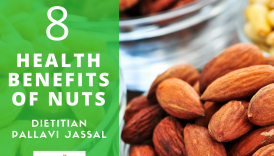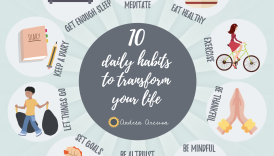Balancing Act: How to Create a Healthy Living Menu for Every Meal

Importance of a Healthy Living Menu
Creating a healthy living menu is essential in today’s fast-paced world, where quick fixes often overshadow nutritional needs. A well-structured menu not only supports bodily functions but also enhances mental clarity and overall well-being. Think about it: when you start your day with a nutritious breakfast, you’re more likely to stay energized and focused throughout the day. A personalized healthy menu allows individuals to:
- Balancing Act: How to Create a Healthy Living Menu for Every Meal
- Importance of a Healthy Living Menu
- Benefits of Balancing Every Meal
- Understanding Macronutrients
- Importance of Protein, Carbohydrates, and Fats
- Recommended Daily Intake for a Balanced Diet
- Building a Balanced Plate
- Portion Control and Food Groups
- Incorporating Fruits and Vegetables in Every Meal
- Planning Healthy Breakfast Options
- Nutritious Breakfast Ideas
- Tips for Starting the Day Right
- Crafting Wholesome Lunch Choices
- Simple and Healthy Lunch Recipes
- Meal Prep Strategies for Busy Days
- Cooking Balanced Dinners
- Dinner Options for Nutrient-Dense Meals
- Avoiding Common Dinner Mistakes
- Snacking Smartly Throughout the Day
- Healthy Snack Ideas
- Importance of Mindful Eating
- Hydration and Balanced Nutrition
- Benefits of Staying Hydrated
- Hydration Tips for a Healthy Lifestyle
- Maintain a balanced diet: Ensures all necessary nutrients are included.
- Promote weight management: Aids in achieving and sustaining a healthy weight.
- Encourage variety: Prevents dietary boredom with diverse meal options.
Benefits of Balancing Every Meal
Balancing each meal is crucial for health optimization. It can help prevent energy dips and keep cravings at bay. For example, mixing protein, healthy fats, and carbohydrates can create lasting satiation. Benefits of balanced meals include:
- Improved digestion: Foods high in fiber facilitate better gut health.
- Stable blood sugar levels: Prevents spikes and crashes in energy.
- Mental sharpness: Nutrient-rich meals support cognitive functions.
In essence, a healthy living menu filled with balanced meals lays the groundwork for a vibrant life. Embracing these principles can be transformative, leading to a clearer mind and a healthier body.
Understanding Macronutrients
Importance of Protein, Carbohydrates, and Fats
Diving into the world of nutrition, it’s essential to understand macronutrients: protein, carbohydrates, and fats. Each plays a pivotal role in maintaining health and supporting bodily functions. Protein is known as the building block of life. It repairs tissues and helps in muscle development. Incorporating lean meats, beans, and legumes can meet protein needs effectively. Carbohydrates serve as the primary energy source for the body. They fuel everything from your morning workout to your late-night study session. Focusing on whole grains and fruits can provide necessary carbs without the crash often associated with processed sugars. Fats aren’t the enemy! Healthy fats, like those from avocados and nuts, support hormone production and enhance nutrient absorption.
Recommended Daily Intake for a Balanced Diet
Understanding how much of each macronutrient to consume each day can optimize your health. A balanced diet typically includes:
- Protein: 10-35% of daily calories
- Carbohydrates: 45-65% of daily calories
- Fats: 20-35% of daily calories
This balanced approach ensures your body receives the energy it needs while supporting growth and development. These guidelines not only foster better health but also promote longevity and vitality in daily life.
Building a Balanced Plate
Portion Control and Food Groups
Having a basic understanding of portion control can make a significant difference in maintaining a balanced plate. By visualizing your meal, you can allocate space for various food groups appropriately. Each plate should ideally include:
- Proteins: About a quarter of your plate. Think grilled chicken or lentils.
- Whole Grains: Another quarter dedicated to quinoa or brown rice.
- Fruits and Vegetables: Half of your plate should be colorful veggies and a piece of fruit.
A personal approach I found effective is using smaller plates. This simple adjustment creates the illusion of a fully-loaded meal, satisfying both appetite and visual appeal.
Incorporating Fruits and Vegetables in Every Meal
Fruits and vegetables are vital for a balanced diet, packed with vitamins, minerals, and fiber. The key is to integrate them seamlessly into your meals. Here are some simple ways to do this:
- Breakfast: Add berries to your oatmeal or spinach to your morning smoothie.
- Lunch: Toss greens into your sandwich or have a side salad.
- Dinner: Steam broccoli or roast mixed vegetables alongside your main dish.
Making the conscious choice to fill your plate with vibrant fruits and vegetables will not only enhance flavors but also boost your nutritional intake, setting a strong foundation for your health.
Planning Healthy Breakfast Options
Nutritious Breakfast Ideas
Breakfast truly is the most important meal of the day, as it kick-starts metabolism and fuels your body after a long night of fasting. Learning to plan nutritious breakfast options can set a positive tone for the day. Here are some delicious ideas to consider:
- Greek yogurt parfait: Layer Greek yogurt with your choice of fresh fruit and a sprinkle of granola for crunch and fiber.
- Overnight oats: Combine oats with almond milk, chia seeds, and your favorite fruits the night before for a grab-and-go meal.
- Veggie omelette: Whip up an omelette packed with spinach, tomatoes, and peppers for a protein-rich start.
- Smoothie: Blend spinach, bananas, and nut butter for a quick nutrient boost.
Tips for Starting the Day Right
How you begin your morning can significantly impact your energy levels. Here are some tips to start the day on the right foot:
- Plan Ahead: Prepare breakfast the night before to reduce morning stress.
- Hydrate: Drink a glass of water first thing to rehydrate your body.
- Mindful Eating: Slow down and enjoy your meal, focusing on flavors and textures.
With these nourishing breakfast ideas and tips in your toolkit, you’re set to kick off each day energized and ready to tackle whatever comes your way!
Crafting Wholesome Lunch Choices
Simple and Healthy Lunch Recipes
Lunch is a fantastic opportunity to recharge and refuel your body during the day. Crafting wholesome lunch choices doesn’t have to be complicated. Here are a few simple and healthy recipes to inspire your midday meal:
- Quinoa Salad Bowl: Combine cooked quinoa with cherry tomatoes, cucumbers, black beans, and a squeeze of lime. Top it off with fresh cilantro for a refreshing kick.
- Turkey Wrap: Use a whole grain wrap filled with sliced turkey, leafy greens, avocado, and hummus. Roll it up for an easy, protein-packed meal.
- Chickpea Salad Sandwich: Mash canned chickpeas with Greek yogurt, diced celery, and spices. Spread it on whole grain bread for a delightful alternative to traditional egg salad.
Meal Prep Strategies for Busy Days
Making healthy choices during stressful days can be tricky, but meal prepping helps streamline the process. Here are strategies to efficiently prep your lunches:
- Batch Cooking: Prepare larger quantities of grains or proteins on weekends to use throughout the week.
- Portioning: Divide meals into convenient containers so they are ready to grab when you need them.
- Freezing: Make extra servings of hearty soups or stews, and freeze them for easy access on particularly busy days.
With a little planning and these delicious recipes, lunchtime can be both nutritious and enjoyable, no matter how packed your day is!
Cooking Balanced Dinners
Dinner Options for Nutrient-Dense Meals
Dinner is an ideal time to gather with family or friends and enjoy a nutrient-dense meal that satisfies your body’s needs. Here are some comforting yet healthy dinner options to consider:
- Grilled Salmon with Asparagus: Rich in omega-3 fatty acids, salmon pairs beautifully with roasted asparagus. Drizzle with lemon for a refreshing twist.
- Chicken Stir-Fry: Sauté sliced chicken breast with a variety of colorful vegetables like bell peppers and broccoli. Serve it over quinoa or brown rice for added fiber.
- Vegetable Lasagna: Layer zucchini, spinach, and ricotta cheese in whole wheat noodles for a satisfying yet lighter take on traditional lasagna.
Avoiding Common Dinner Mistakes
While crafting these meals, it’s crucial to recognize and avoid common dinner mistakes. Here are a few pitfalls to watch out for:
- Overloading on Carbs: Many people fill their plates with pasta or rice. Balance your protein and carbs by filling half your plate with vegetables.
- Skipping Protein: A lack of protein can leave you hungry later. Ensure each meal includes a healthy protein source.
- Mindless Eating: Eating while distracted can lead to overeating. Try to sit down and enjoy the meal with focus.
By incorporating these dinner ideas and avoiding common mistakes, you can enjoy nutritious meals that nourish your body and satisfy your palate!
Snacking Smartly Throughout the Day
Healthy Snack Ideas
Snacking smartly can help maintain energy levels and prevent overeating during meals. Choosing nutrient-rich snacks not only satisfies hunger but also provides essential vitamins and minerals. Here are some healthy snack ideas to consider:
- Nut Butter and Apple Slices: Spread almond or peanut butter on apple slices for a delightful combo of protein, fat, and carbs.
- Veggies and Hummus: Baby carrots, cucumber slices, and bell peppers pair well with hummus, delivering fiber and healthy fats.
- Greek Yogurt with Berries: A small bowl of Greek yogurt topped with fresh berries offers a good source of protein and antioxidants.
- Trail Mix: Create your own mix using nuts, seeds, and a handful of dark chocolate chips for a satisfying sweet and salty treat.
Importance of Mindful Eating
While snacking is great, practicing mindful eating is essential. When savoring your snacks:
- Limit Distractions: Put away your phone or turn off the TV to focus on your food.
- Listen to Your Body: Pay attention to how hungry you feel. Eat slowly and stop when you’re satisfied, not stuffed.
- Enjoy the Flavors: Take a moment to appreciate the taste and texture of each bite.
By incorporating healthy snacks and embracing mindful eating, you’ll find greater satisfaction in your food choices, leading to a healthier lifestyle overall!
Hydration and Balanced Nutrition
Benefits of Staying Hydrated
Often overlooked, hydration is a crucial aspect of balanced nutrition and overall well-being. Proper hydration supports various bodily functions, including digestion, circulation, and temperature regulation. Staying hydrated can also:
- Boost Energy Levels: Dehydration can lead to fatigue, making it challenging to stay productive throughout the day.
- Improve Concentration: Drinking enough water enhances cognitive functions, helping maintain focus and mental clarity.
- Support Weight Management: Sometimes, our bodies misinterpret thirst for hunger. Staying hydrated can reduce unnecessary snacking.
Hydration Tips for a Healthy Lifestyle
Incorporating hydration into your daily routine can be simple and enjoyable. Here are some practical tips:
- Carry a Water Bottle: Keeping a reusable water bottle with you serves as a constant reminder to drink water.
- Set Reminders: Use your phone or a hydration app to set reminders for regular water intake throughout the day.
- Infuse Your Water: Add slices of fruits like lemon, cucumber, or berries to your water for a flavorful twist that encourages drinking more.
By prioritizing hydration alongside balanced nutrition, you can enhance your energy, focus, and overall health, making every part of your day enjoyable!





